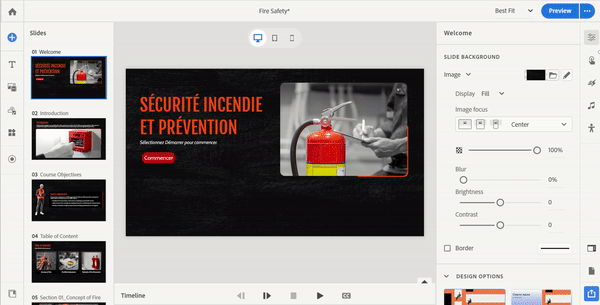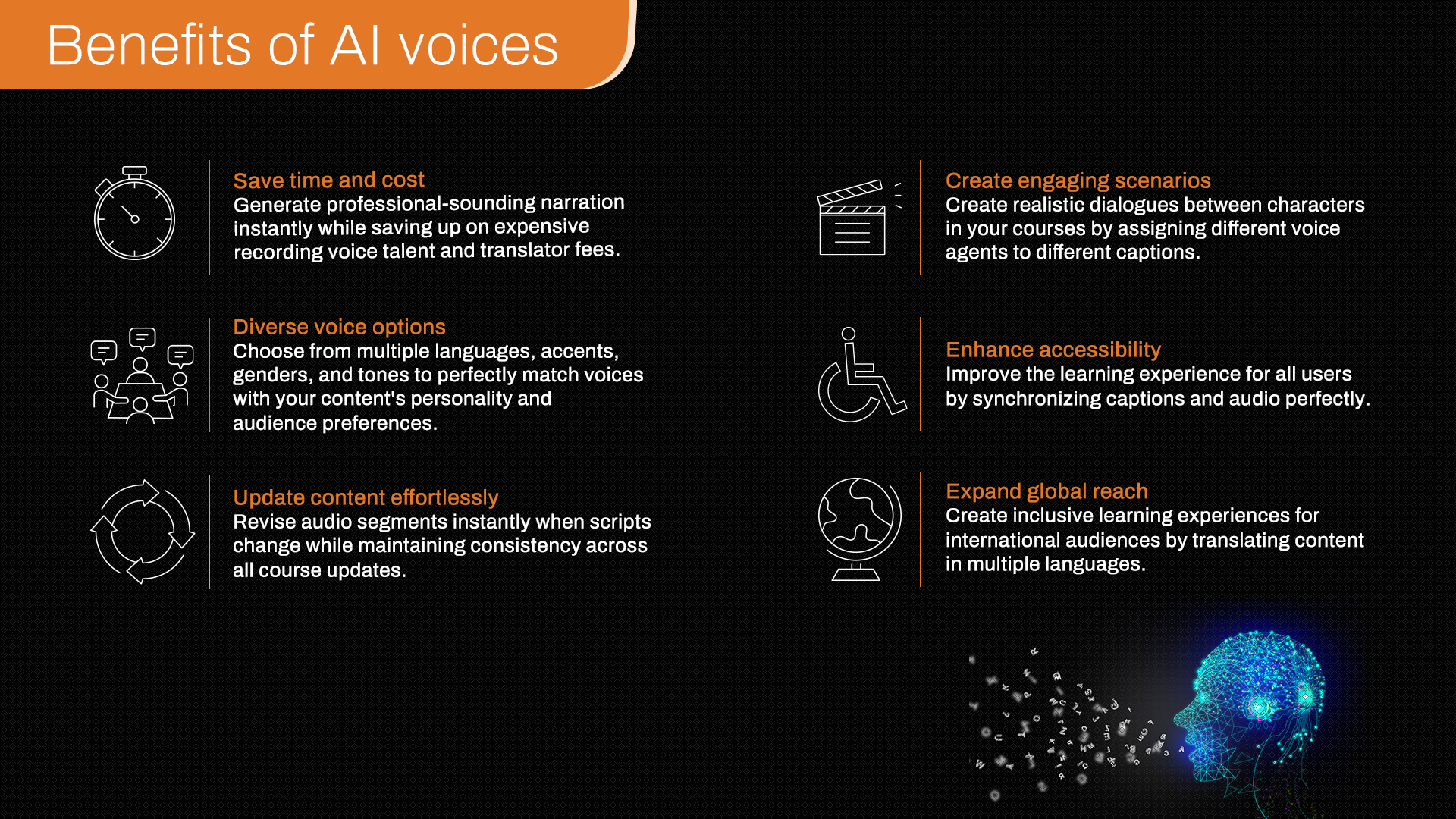Have you ever ever discovered your self caught within the countless cycle of recording, re-recording, and modifying voiceovers to your eLearning programs? Or possibly you’ve needed to delay course launches as a result of your voice expertise wasn’t accessible for these last-minute script modifications? In that case, I’ve bought some thrilling information that may simply make your day!
Adobe Captivate has launched a powerful AI-powered text-to-speech characteristic that’s considerably bettering the workflow for course creators like us. This software lets you remodel your closed captions into life like, natural-sounding audio with just some clicks – and the outcomes are surprisingly good!
Why Textual content-to-Speech Is So Precious
Creating voiceovers historically has been resource-intensive, time-consuming, and sometimes costly. You’d want to rent voice actors, schedule recording classes, after which undergo the entire course of once more every time content material wanted updating. This turns into much more difficult when creating multilingual programs.
With Adobe Captivate’s text-to-speech performance, you’ll be able to:
- Generate professional-sounding narration immediately.
- Choose from a wide range of AI voices with completely different accents, languages, and tones.
- Save important money and time on voice expertise.
- Replace audio effortlessly when content material modifications.
- Create constant voiceovers throughout your whole course.
The Spectacular Voice Choice
What makes this characteristic significantly highly effective is the vary of voice choices accessible. You may select from:
- A number of languages (English, French, Korean, and lots of extra)
- Totally different genders (female and male voices)
- Varied accents and regional variations
- Totally different tones and kinds to match your course’s character
This implies you’ll be able to choose voices that really align together with your content material’s tone and your viewers’s preferences. Educating a technical course? Select a extra authoritative voice. Creating an off-the-cuff, pleasant studying expertise? There’s a heat, conversational voice for that too!
Methods to Implement Textual content-to-Speech in Your Programs
Utilizing this characteristic is surprisingly easy. Right here’s a fast walkthrough:
- Choose the slide or textual content caption the place you wish to add narration.
- Navigate to the Audio Inspector.
- Click on on ‘Import Audio’ and choose ‘Generate Textual content-to-Speech’.
- Select your most popular language and voice from the accessible choices.
- Customise the pacing and pronunciation if wanted.
- Click on ‘Generate Audio’ to create your voiceover.

What’s actually cool is which you could assign completely different voice brokers to completely different captions. This implies you’ll be able to create dialogue between characters or differentiate between most important content material and examples – including one other dimension to your programs.
Advantages That Go Past Comfort
Whereas the time and price financial savings are apparent advantages, there are different benefits that may not be instantly obvious:
- Constant High quality: Each narration maintains the identical high quality degree, tone, and quantity – one thing that may be exhausting to realize with a number of recording classes.
- Simple Updates: Modified a single phrase in your script? No drawback! You may regenerate simply that phase with out re-recording the complete voiceover.
- Accessibility Enchancments: For learners who profit from each audio and visible content material, having synchronized captions and audio enhances the educational expertise.
- International Attain: Creating variations of your course in a number of languages turns into way more possible while you don’t want to search out voice expertise for every language.
Actual-World Functions
I’ve seen this characteristic remodel workflows for numerous content material creators:
A company coaching crew used completely different voices for scenario-based studying, creating life like office dialogues with out hiring a number of voice actors.
A college professor created course supplies in three languages, making content material accessible to worldwide college students with out the huge finances sometimes required.
A solo eLearning developer was capable of meet tight deadlines by eliminating the back-and-forth with voice expertise, producing skilled narration on demand.
Finest Practices for Getting Pure Outcomes
Whereas the AI voices are spectacular, listed below are some tricks to get probably the most natural-sounding outcomes:
- Use correct punctuation to manage pacing and emphasis.
- Break lengthy sentences into shorter ones for extra natural-sounding speech.
- Check your generated audio with native audio system when creating multilingual content material.
- Take into account the cultural nuances and localization wants past simply translation.
- Use the pronunciation editor for technical phrases or names that is likely to be mispronounced.
The Way forward for Course Narration
The standard of AI voices has improved dramatically lately, and it’s solely getting higher. What as soon as sounded robotic and unnatural can now be mistaken for human narration – particularly when correctly configured.
This doesn’t imply human voice actors will disappear from eLearning. There’ll at all times be tasks that profit from the distinctive high quality and emotional connection of human narration. However for a lot of on a regular basis course improvement wants, AI-powered text-to-speech gives an environment friendly, high-quality various that’s exhausting to disregard.
Attempt It Your self!
For those who’re an Adobe Captivate person, I’d extremely suggest giving this characteristic a strive. You is likely to be shocked at simply how pure the outcomes might be, and the time you’ll save in your manufacturing course of is invaluable.
Have you ever already tried utilizing AI voices in your eLearning tasks? I’d love to listen to about what voices labored greatest to your content material? Any intelligent methods you’ve used a number of voices to boost the educational expertise?


